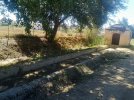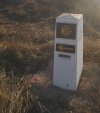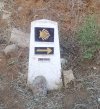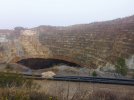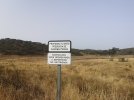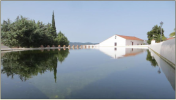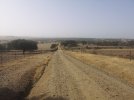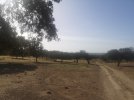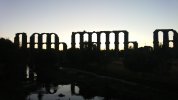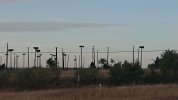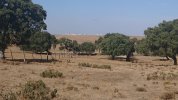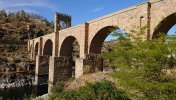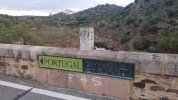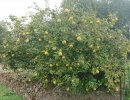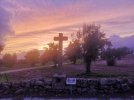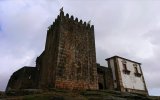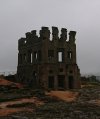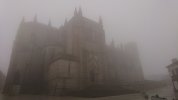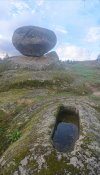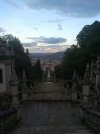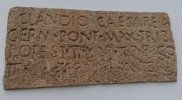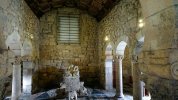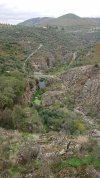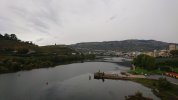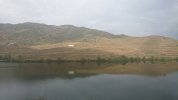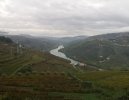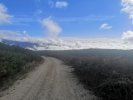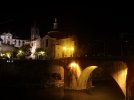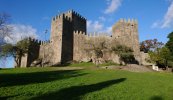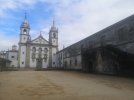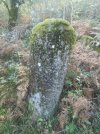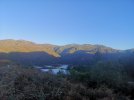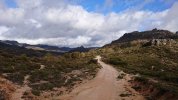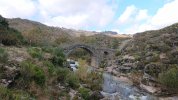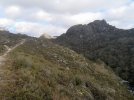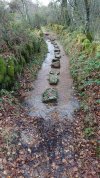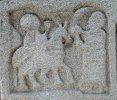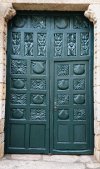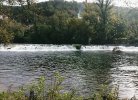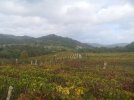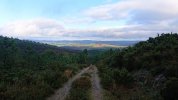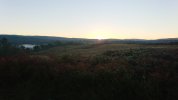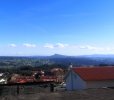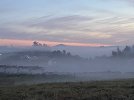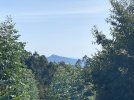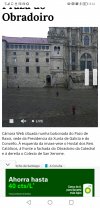- Time of past OR future Camino
- Except the Francés
Ambling aimlessly through central Huelva, I noticed some tourism posters advertising Galicia. A closer look showed that it was the office of the local amigos of the camino. By the luckiest fluke, a couple of them were inside and eager to help one of the relatively few pilgrims who start from here. They gave me an up to date list of accommodation and more chat about potential problems and things not to miss. They were so kind and helpful that, when one of them committed my blackest of bêtes noirs - that Extremadura means "extremely hard" - I somehow ignored my red mist and managed not to contradict him.
The next morning, slightly before dawn (gone 8am this far west) I swam out of the warm calm Atlantic waters onto a little beach by the huge Río Tinto company staithes.
5-6km pleasant walk along the splendid esplanade takes you to the Columbus monument. Seeing the huge bulk approaching - it's 37m tall - I assumed it was a Franco era work, but it turns out that it was by Gertrude Vanderbilt and a gift from the American people to Spain in 1929.
Columbus sailed west from here, but I started my long walk northwards, ending the day at a pleasant dormitory town called Trigueros, full of noisy children enjoying the start to the weekend.
On the way I was lucky to pass the 13th century Pinete abrevadero. Its claim to fame is that the donkey Platero, in Nobel literature laureate Juan Ramón Jiménez' "Platero y Yo", drinks from it and suffers a bloody mouth from the leach he ingests with the water. I suffered no such problem as the trough is firmly dry at the moment. The author, living and dying in exile after the civil war, was later buried in his hometown, nearby Moguer.
The next morning, slightly before dawn (gone 8am this far west) I swam out of the warm calm Atlantic waters onto a little beach by the huge Río Tinto company staithes.
5-6km pleasant walk along the splendid esplanade takes you to the Columbus monument. Seeing the huge bulk approaching - it's 37m tall - I assumed it was a Franco era work, but it turns out that it was by Gertrude Vanderbilt and a gift from the American people to Spain in 1929.
Columbus sailed west from here, but I started my long walk northwards, ending the day at a pleasant dormitory town called Trigueros, full of noisy children enjoying the start to the weekend.
On the way I was lucky to pass the 13th century Pinete abrevadero. Its claim to fame is that the donkey Platero, in Nobel literature laureate Juan Ramón Jiménez' "Platero y Yo", drinks from it and suffers a bloody mouth from the leach he ingests with the water. I suffered no such problem as the trough is firmly dry at the moment. The author, living and dying in exile after the civil war, was later buried in his hometown, nearby Moguer.



